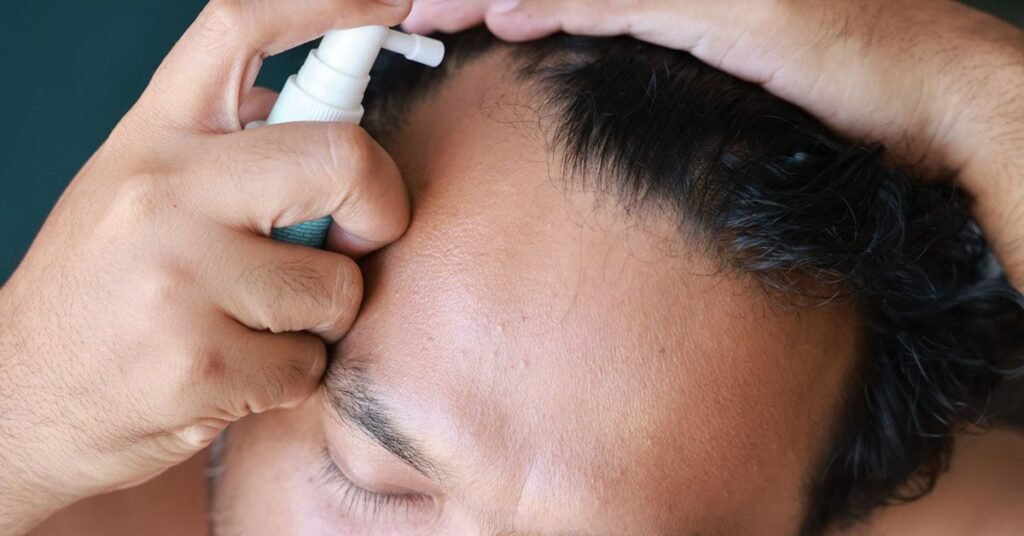The FDA’s Warning on Topical Finasteride: What You Need to Know
The U.S. Food and Drug Administration (FDA) has raised alarms regarding adverse effects linked to topical finasteride, a drug many are using for hair loss treatment via telehealth platforms like Hims & Hers and Ro. While these companies promote it as a localized solution, the FDA’s recent warning highlights serious risks that consumers may not be fully aware of.
Understanding Finasteride and Its Risks
What is Finasteride?
Finasteride is primarily known for treating male pattern baldness and benign prostatic hyperplasia (BPH). While the oral form of this medication has FDA approval, topical formulations have not been sanctioned. The discrepancy raises eyebrows among medical professionals who question the safety and efficacy of these compounded alternatives.
Reported Side Effects
The FDA’s warning also brings to light side effects associated with topical finasteride, which mirror those of its oral counterpart. Users have reported:
- Depression
- Dizziness
- Fatigue
- Low libido
Some individuals even described their symptoms as life-altering. For instance, U.S. Army Sgt. Mark Millich shared his experiences of anxiety and severe sexual side effects, including reduced libido and genital shrinkage, as detailed in a recent investigation by the Wall Street Journal.
“A lot of people have a misconception that because it’s topical, it’s not going to be absorbed systemically,” said Anthony Oro, MD, PhD, a professor of dermatology at Stanford Medicine.
Patient Awareness
Many users reported being misinformed about the potential risks associated with topical finasteride. The FDA highlighted concerns that some healthcare providers assured patients that these risks were negligible or nonexistent.
The Concerns about Telehealth Platforms
Telehealth services like Hims & Hers and Ro are making hair loss treatments more accessible, but they come with their own set of challenges. Unlike traditional pharmaceutical companies, these platforms are not held to the same rigorous regulatory standards and do not always disclose potential side effects in their advertising.
Misleading Marketing Tactics
- Ro states that topical finasteride doesn’t enter the bloodstream like oral finasteride, which could imply a lower risk of systemic effects.
- Hims downplays potential side effects, referring to them as “minimal” and localized.
Despite these claims, the FDA urges consumers to approach these products with caution.
Additional Risks of Topical Finasteride
Aside from the serious side effects mentioned, the FDA cautions against several other potential dangers:
- Localized irritation
- Dryness and erythema
- Stinging or burning sensation
Unintended Consequences
Moreover, since topical finasteride is directly applied to the skin, it poses risks of inadvertent transfer to others through contact. This risks exposure to unintended individuals, creating potentially severe implications, especially for pregnant women due to its possibility of causing fetal abnormalities.
The Debate Over Post-Finasteride Syndrome (PFS)
Some men have reported lingering sexual and psychological effects even after discontinuing the drug—a condition referred to as post-finasteride syndrome (PFS). However, this phenomenon remains controversial and hotly debated within the medical community.
Conclusion: The Need for Informed Decision-Making
Given the FDA’s warning and the shadows cast over telehealth platforms, it is crucial for consumers to understand the full scope of risks associated with topical finasteride. Health professionals have an important role in educating patients about these potential dangers.
Key Takeaways:
- Be Informed: Ensure you fully understand the side effects before opting for any hair loss treatment.
- Consult With Professionals: Maintain a close relationship with healthcare providers for informed decision-making.
- Watch for Symptoms: Be vigilant about any adverse effects, and report them to your healthcare provider immediately.
The increasing accessibility of compounded medications necessitates a diligent approach to healthcare. You deserve to be informed about the treatments you choose—knowledge is your best defense against harmful side effects.
For more information on safe treatment options for hair loss, consider visiting trustworthy sources such as American Academy of Dermatology or consult directly with a healthcare provider.


